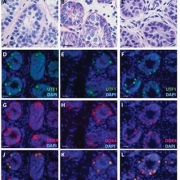Researchers hope to uncover puzzling mechanism of vision loss in kids with $2.7M DOD award
 The Department of Defense Neurofibromatosis Research Program awarded Children’s National Hospital $2.7M to better understand a pediatric tumor as a blinding disease. The study design will specifically focus on targeting immune responses during the development of the tumor as a means to prevent or preserve vision before the tumor-associated irreversible neurological damage.
The Department of Defense Neurofibromatosis Research Program awarded Children’s National Hospital $2.7M to better understand a pediatric tumor as a blinding disease. The study design will specifically focus on targeting immune responses during the development of the tumor as a means to prevent or preserve vision before the tumor-associated irreversible neurological damage.
Why it matters
Nearly 20% of individuals with neurofibromatosis type 1 (NF1) develop tumors along the anterior visual pathway, involving optic nerves, optic chiasm and optic tracts, known as NF1-associated optic pathway gliomas (NF1-OPGs). This tumor is mainly diagnosed in children younger than seven years, which could lead to a lifelong disability.
NF1-OPGs often grow extensively along the optic pathway, and surgery is a high-risk treatment option. Consequently, human tumor tissues are rarely available for research.
Why we’re excited
“We are very excited about this research because, if successful, we will provide a strategy to treat patients with NF1-OPGs before visual impairment becomes irreversible,” said Yuan Zhu, Ph.D., scientific director and Gilbert Family Endowed professor at the Gilbert Family Neurofibromatosis Institute and senior investigator at the Center for Cancer and Immunology Research, both part of Children’s National. “We combine the expertise of glioma at the Children’s National and retinal biology at the NIH/NEI.”
The research will combine the synergistic expertise between Zhu on NF1 and OPG using pre-clinical models and Drs. Han-Yu Shih and Wei Li at the National Eye Institute of the National Institutes of Health (NIH/NEI) on retinal biology and immunology.
What’s unique
To shed light on the chemical signaling that occurs in the optical nerve with the presence of gliomas, the research approach will have three aims:
- Isolate and characterize this abnormally infiltrating inflammatory cells and perform multi-omics experiments, including sophisticated genomic, epigenomic and transcriptomic assays, to study them during OPG initiation and progression.
- Prevent or alleviate OPG-associated nerve damage, RGC death and vision loss.
- Develop a novel model using the newly established genetic system to identify signals that induce inflammatory responses.










